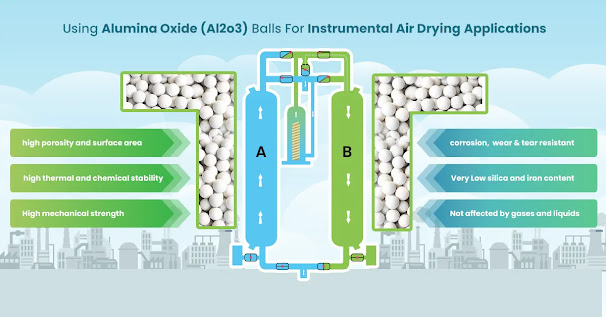High Density Alumina Ball 12mm are widely used in many different applications and processes across industries for its many properties, like it is corrosion-resistant, lightweight, provides high operational efficiency and durability, has superior strength, has good thermal and chemical stability, and can work efficiently in high-temperature and high wear & tear environments.
These high density 12mm balls are mainly made of aluminum oxide, which is non-toxic and inert in nature, have high hardness, and can handle many tough materials and processes without breaking down or damaging them.
What are the advantages of using high density alumina balls 12mm in your industrial application?
There are many benefits of using high density 12mm alumina balls in various industrial applications, due to their effective and functional properties, and thus using the appropriate grinding medium such as these alumina balls, is essential for increasing productivity, reducing costs, and improving product performance in a wide range of industrial applications.
Alumina balls with high density and 12mm size can withstand very high temperatures, as high as 1800°C, and do not damage/deteriorate easily, which makes them a very suitable material for high temperature applications such as furnace lining, and catalyst support applications.
The high density alumina balls material is highly resistant to wear & tear, and other structural changes, thus it can be used in various applications where there is a high amount of friction, abrasion, or other factors that may lead to deterioration due to high wearing. The toughness and hardness of alumina balls of size 12mm help to extend the life of the balls, reducing the need for frequent replacements and downtime of the process or equipment.
Various applications of 12mm high density alumina balls
The use of 12mm high density alumina balls finds its use and applications in various tasks and processes across varied industries for its chemical, physical and adsorbent properties.
In water treatment systems
The 12mm alumina balls are used in water treatment systems and mainly in filtration systems. They can help adsorb many types of impurities and contaminants effectively found in wastewater or other water treatment samples. Due to their chemical stability and wear resistance, they are suitable for water treatment applications where durability is important.
In lab and research applications
Alumina balls are commonly used in laboratory settings for a variety of research applications, including grinding samples or in reaction vessels. Their size makes it easier to be used in various test applications, for their inert nature, and their chemical and thermal stability.
In ball bearings and common precision equipments
Since balls have a uniform size, here of 12mm, and uniform shape, it makes them suitable for many precision applications, such as ball bearings and other industrial processes. Since the material is highly durable, it can greatly improve and enhance the performance and lifespan of such precision equipment in machinery and manufacturing of industrial applications.
In air and gas sealing processes
In air and gas sealing processes in high temperature and high wear applications, alumina balls are a suitable solution due to their high density properties, which help in many industrial applications dealing with the purification of air and gases, requiring high strength and corrosion resistance. For more Details - https://www.activatedaluminaballs.com/blogs/why-should-you-choose-high-density-alumina-ball-12mm-for-your-applications




